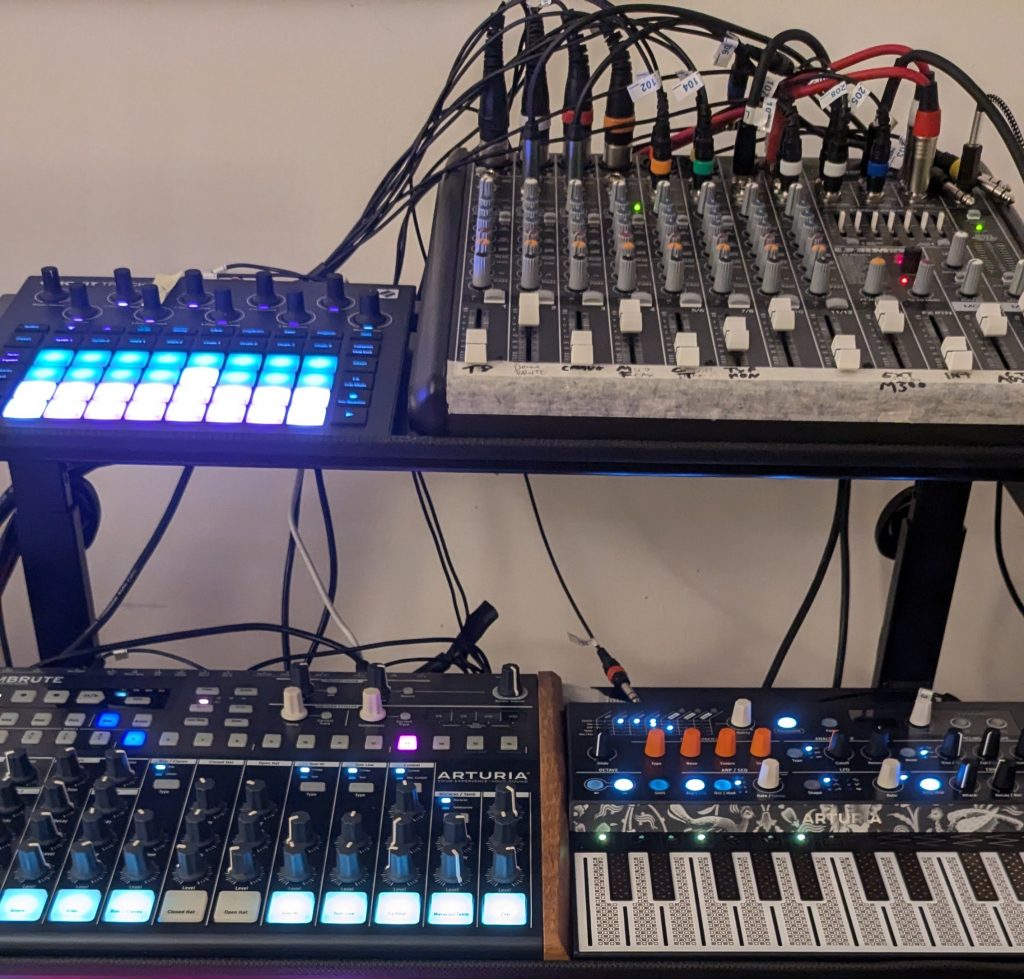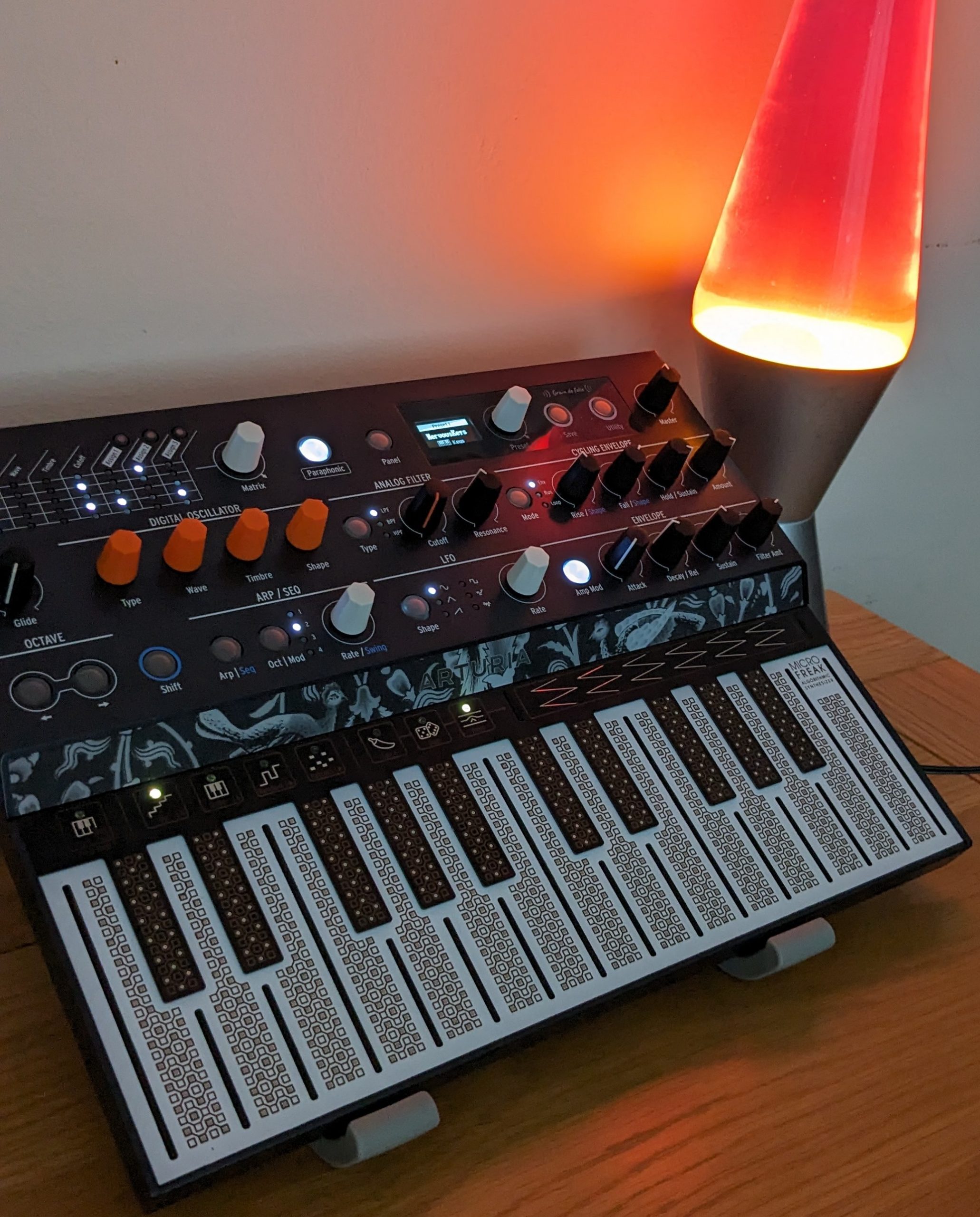Well I finally found some time to learn the Microfreak’s sound design. Until now I had mostly ARP-ing the Presets and tweaking the low pass filter of course! And so now, diving into the Mod Matrix, I can see why this synth receives so many plaudits, Arturia have stuffed this synth full of features, but still kept it fairly easy to use. In todays post we will take a look at the Microfreak one of Arturias most affordable synths, available from Arturias Store on Amazon.
Features and Design
The Arturia Microfreak is a synthesizer whose possibilities exceed its diminuative size. It features a complex digital ocillator, a multimode analog filter and a smooth, expressive keyboard, that is probably not to everyones tastes. So lets start there! The Microfreak keyboard is pretty unique, it is flat, touch-sensitive, and has polyphonic aftertouch. This means you can control the pressure of each note independently, and use it to modulate various parameters, such as the filter cutoff, the oscillator shape, or the LFO rate. The keyboard is very sensitive, but it is also just weird and unnatural to play at first. Of course you can always connect a traditional MIDI keyboard but I found it was best just to embrace its strengths, rather than treat it as something it is not. It is certainly good for trying slide up and down the keys, but I never find it natural to use the modulation aspect of it, or to play live on.

At its core, the Microfreak is 4 voice paraphonic, the sound generator is digital and features twelve different modes, which features classic wave forms and modes taken from Mutable Instruments famous opensource Braids. As well as using the ADSR, filter and resonance their are Wave, Shape and Timbre controls that all do different things depending on the oscillator selected. In general I just twiddle them randomly and listen to what happens. This is a synth you could use for years and still not uncover every thing.
What is Paraphonic?
A paraphonic synthesizer can play multiple notes at a time, but those notes share certain elements of their signal path, most commonly and in the Microfreaks case they share the filter and envelopes. As opposed to Polyphonic synthesizer where each voice typically has its own oscillator, filter, and amplifier (and often its own dedicated envelope generators for both filter and amplitude).
Sequencing
When I started using the Microfreak, I liked that it felt like it was one knob per function, but this breaks down when it comes to the sequencer. The sequencer can make two 64 step patterns per patch and like many synths there isnt really a quick method of copying a sequence to a different tone patch. A nice touch is by holding shift and hitting sequence A or B the current arpegiator pattern can be copied into the sequence. My main problem though is between the strange icons and shift functions, everytime I try and record or play a sequence, I invariably hit the wrong button combo. The way around it is to use an external sequencer, or a bigger synth with clearer controls, or I should just have less gear and actually learn how to work the boxes I have instead of buying new shiny! Also when sequencing there are the very fun Spice and Dice features to add some randomization to proceedings.
Mod Matrix
The features just don’t stop. The Microfreak also has a modulation matrix, which lets you assign five sources (envelope, LFO, keyboard pressure, keyboard pitch, and a random generator) to seven destinations (wave, timbre, shape, cutoff, resonance, LFO rate, and oscillator type). You can adjust the amount of modulation for each slot, and create some wild and unexpected sounds. The modulation matrix is a powerful feature that encourages experimentation. Dont expect to master it quickly though!
No FX
There is no built in FX on this synth, which is a shame for that you would have to upgrade to the Arturia Minifreak other benefits of Minifreak is the companion VST, and more of a traditional mini keyboard and 6 note polyphony nextra oscillator and LFO amongst other things. Another alternative for a small budget synth with built in FX could be the Roland S-1, which features Chorus, reverb and delay.
Software Updates
Despite its age, Arturia continued to release software updates, expanding the functionality. Last years version 5 firmware introduced user sample importing, a sample playback engine, 3 new granular engines, enhanced envelopes all for free and several years after the device was first released.
Summary – Microfreakin Awesome
With its unique, and small form factor, feature updates, versatile sound engine, Its no wonder the Microfreak is a staple of so many DAWless setups. And if you are looking for more polyphony, a more traditional keybed then consider its larger sibling, the Minifreak.
Product Details
See the Arturia Microfreak on Amazon
Also consider the larger Arturia Minifreak or perhaps the Korg microKORG
Disclaimer As an Amazon Associate, I earn commission from qualifying purchases.
